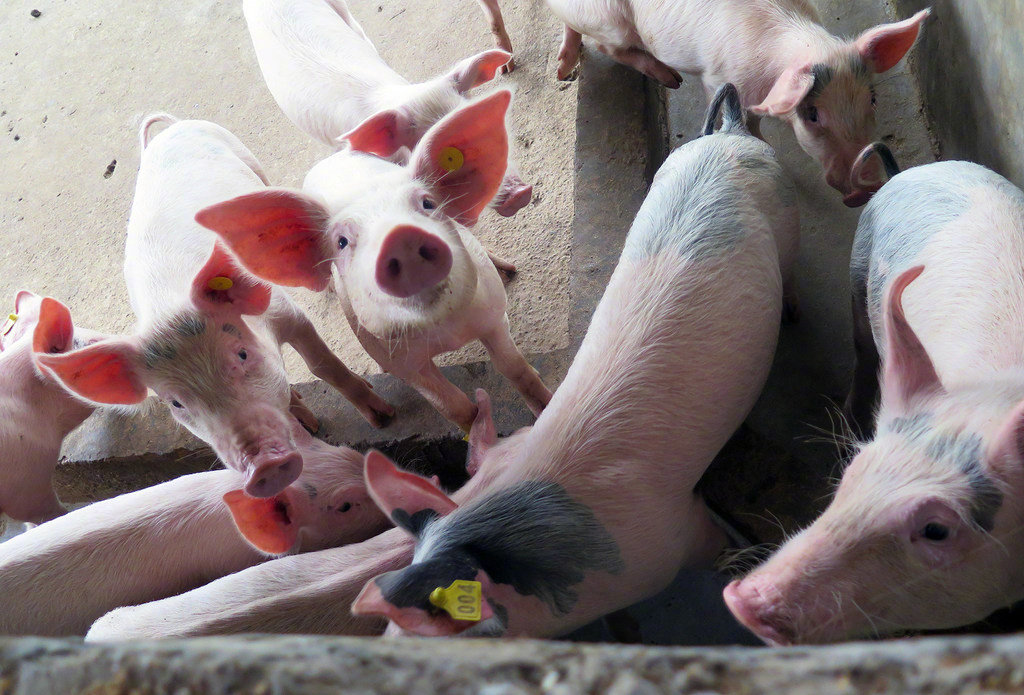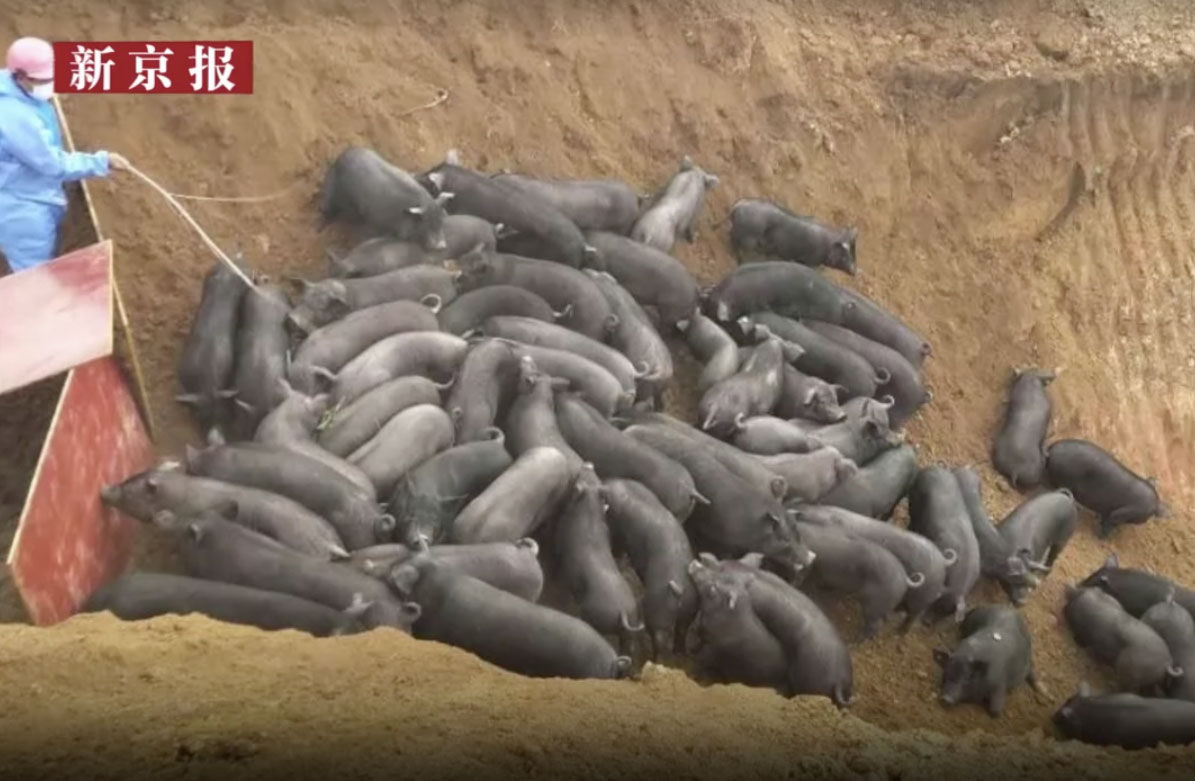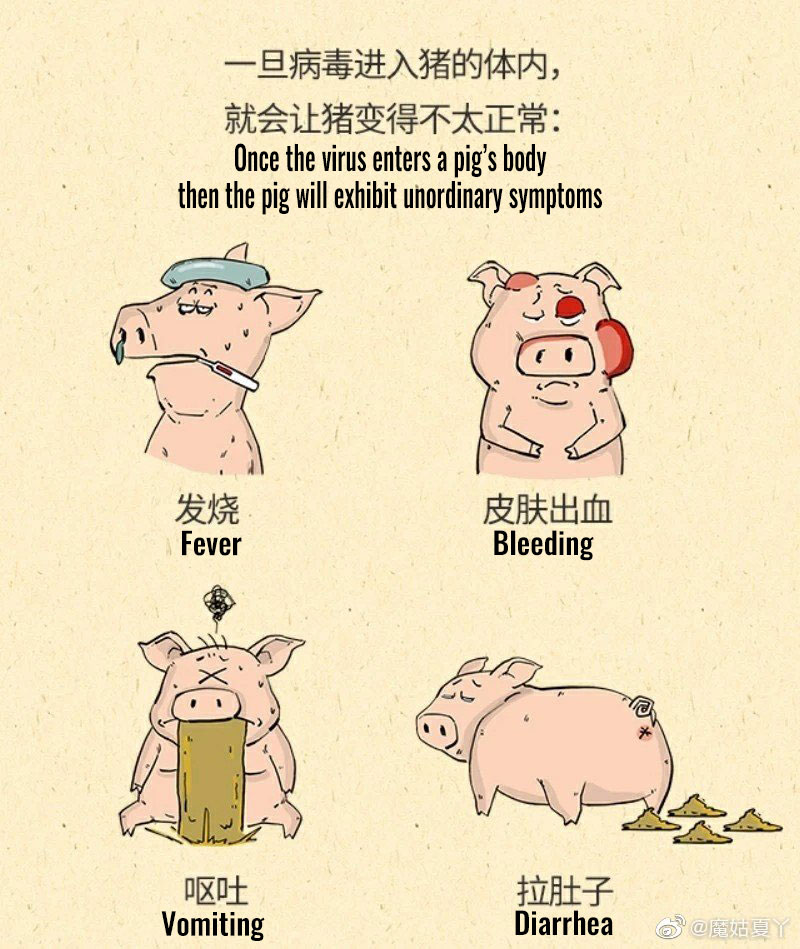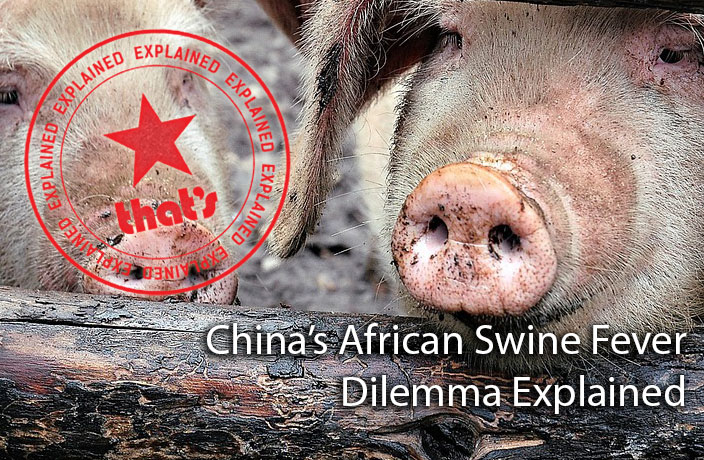The Explainer is where we explain an aspect of life in China. Simple. So now you know.
On August 3, 2018, China reported its first case of African swine fever (ASF) in Liaoning province. At the time, it was the first known case in East Asia, and 913 hogs were slaughtered in an attempt to control the outbreak.
Now, roughly one year after the Liaoning cases, more than 140 cases of ASF have been reported in China. The virus is said only to affect pigs, leaving other animals and humans safe from infection.
Symptoms of the potentially fatal disease include fever, loss of appetite, lack of energy, abortions, internal bleeding, with hemorrhages visible on the ears and flanks. According to the European Food Safety Authority, severe strains of ASF are often fatal, with death occurring within 10 days. There are, however, more mild strains of the virus which may not show usual signs.
Healthy pigs are usually infected via 1) contact with other infected swine, 2) ingesting meat products from infected animals, 3) bites by infectious ticks or 4) contact with anything else contaminated (i.e. clothing, vehicles and other equipment).

Image via @联合国/Weibo
The typical response when the virus is detected in China is to cull the affected pigs and disinfect any transport vehicles used to carry the swine, according to Xinhua.
While the number of pigs slaughtered in the ongoing fight against the disease varies (we’ve seen reports on the number of culled hogs in the PRC ranging from 1 million to over 100 million), one thing is for certain – China’s pig population is dropping fast. Videos have surfaced over the past year of hordes of hogs transported to excavated sites and burned alive.

Screengrab via QQ
Watch below for a close-up look at the handling of ASF-infected swine (VPN off):
The country leads the world in pork production, producing over 54 million metric tons of pork in 2018 – approximately 45% of global pork production, according to Statista.
Unfortunately for pork lovers, the decreasing pig population is hitting them in their wallets.
According to Caixin Global, the market price of pork in June reached over RMB25 per kilogram, a 29.2% rise year-on-year. But before pork even reaches the refrigerated shelves, hog farmers are shelling out much more to acquire the animals, with the price of live pigs and piglets jumping 40.8% and 65.7% year-on-year, respectively. Pork prices are now at their highest levels since 2013, which Wang Ya’nan, a pork industry analyst, attributes to a “decreasing supply of live pigs.” Wang was quoted on Zhujiang Economics Radio Station FM97.4 as saying: “The price of live pigs and pork meat is expected to continue moving in an upward trend till the end of this year.”
But, even rising pork prices are unlikely to deter Chinese consumers from picking up those tender cuts of meat. Pork is projected to make up 60% of China’s entire meat consumption by 2026 (although the forecast is more than likely to change, given current conditions).
In the meantime, ASF has ravaged China’s pig population like never before. According to South China Morning Post, the virus had spread all over China within the first nine months of the intial outbreak in the country. Cases have been reported from Guangdong to Xinjiang, and Hainan to Liaoning.
China’s response to the outbreak has been met with difficulty. Between outbreaks not being properly reported and unsanitary practices, such as using kitchen waste as pig feed, Beijing has been fighting an uphill battle to eradicate the virus in China. On Chinese social media, you can find infographics on how to identify ASF.

A graphic published on Weibo to help farmers identify ASF. Image via @磨姑夏丫/Weibo
Meanwhile, neighboring Asian countries have reported new cases of ASF at an alarming rate (the disease has also pestered African and European countries for decades). According to a report on ASF in Vietnam by the USDA Foreign Agricultural Service, the virus has spread through 58 of the country’s 63 municipalities within a five-month period (February-June 2019). Nearly 9.4% of Vietnam’s swine population has been infected and killed, totaling 2,637,051 pigs, as of June 17, 2019.
While China continues to combat ASF and regulate pig farms around the country, chicken and duck farmers are looking to cash in on the business opportunity of a lifetime. South China Morning Post reported that China’s vice-premier, Hu Chunhua, had encouraged poultry farms to “help fill the protein gap to maintain social and economic stability.”
For more of The Explainer, click here.
[Cover image via Pixabay]






















0 User Comments